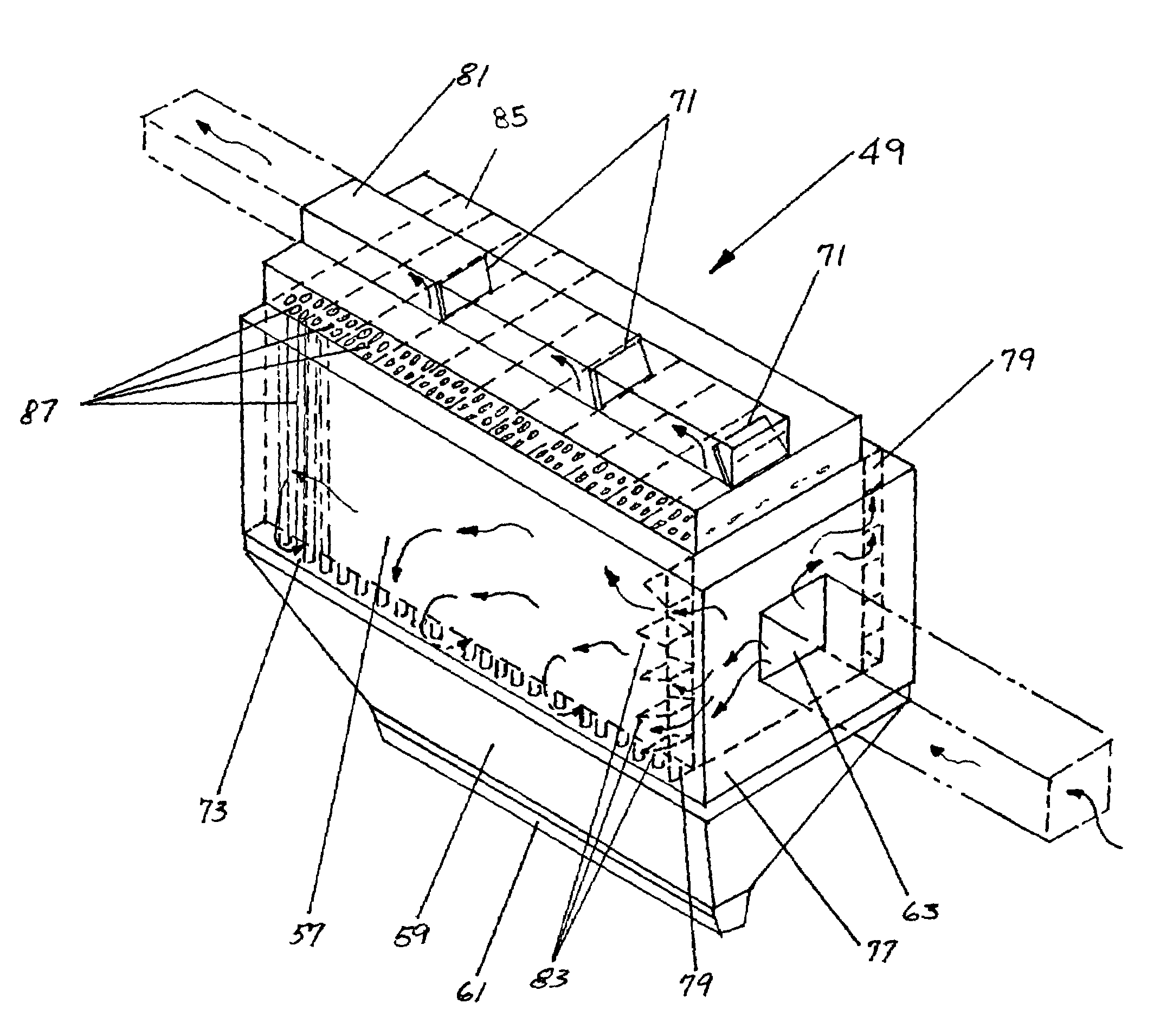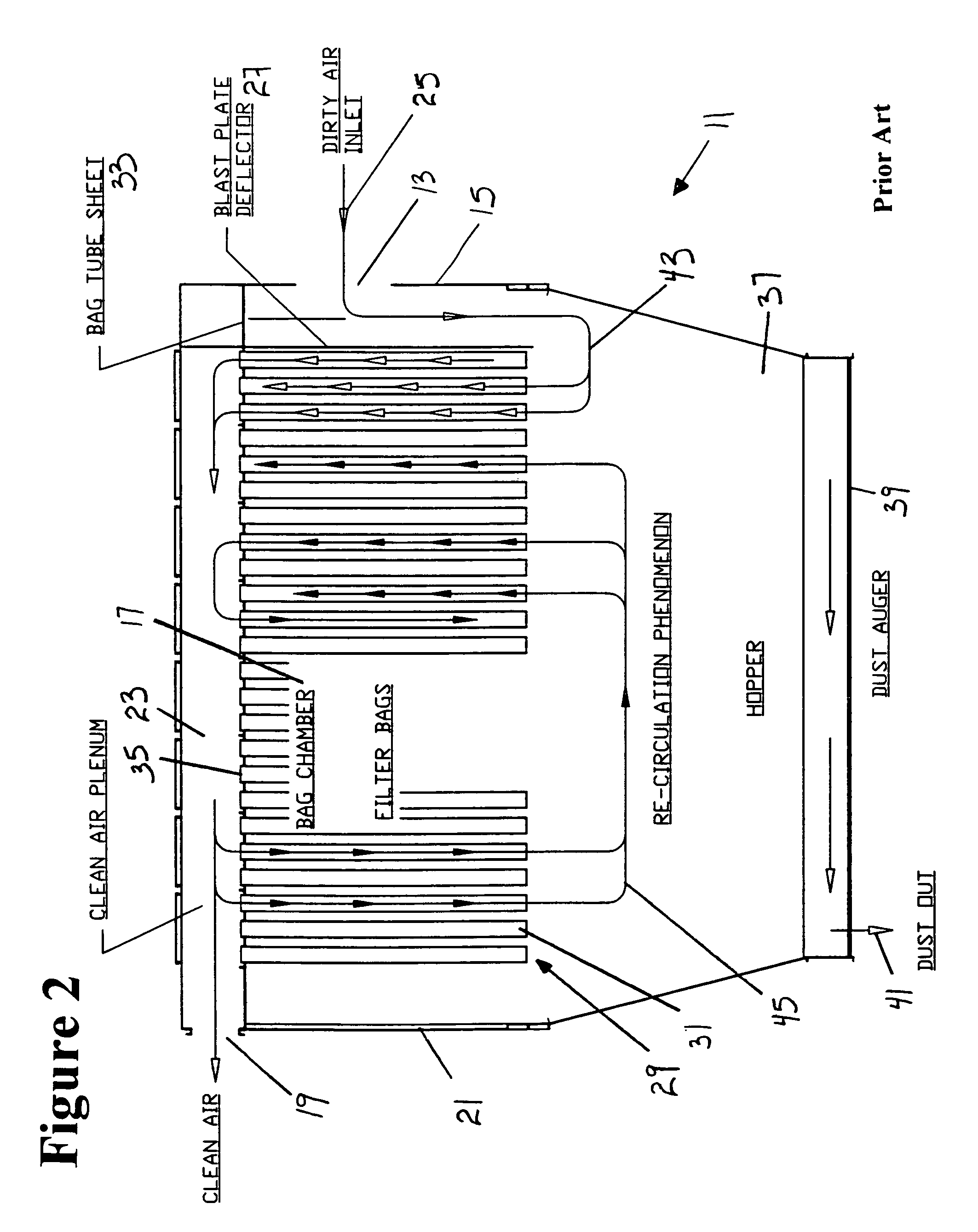Modular up-draft pressure pulse bag house
a module and bag house technology, applied in the field of module up-draft pressure pulse bag house, can solve the problems of inadvertent recycling of cleaned air, inability to clean air pass through the filter bag in the wrong direction, and limited size of the portable bag house, etc., to achieve high volume requirements, simplify the bag cleaning operation, and high pressure
- Summary
- Abstract
- Description
- Claims
- Application Information
AI Technical Summary
Benefits of technology
Problems solved by technology
Method used
Image
Examples
Embodiment Construction
[0038]The present invention relates to the effective capture and removal of particulate material from dust laden air streams that must exit to atmosphere from many different process systems.
[0039]FIG. 1 shows a typical bag house 11. A standard bag house 11 consists of a vessel 13, generally a rectangular container, having a dirty air inlet on one end 15 leading into a lower bag section 17 with a clean air outlet 19 on the other end 21 at the top leading from the upper clean air section 23. Incoming dirty air 25 is deflected downward into the bag chamber 17 of the bag house 11 by a blast deflector plate 27. The blast deflector plate 27 also protects bag filters 29 from being damaged by the force of the incoming dirty air 25. After the dirty air 25 enters the bag chamber 17, it must pass thorough a set of bag filters 29 in order to reach the clean air outlet 19.
[0040]The bag house 11 contains a multitude of bag filters 29. Each bag filter 29 consists of woven fabric bags 31 that can b...
PUM
| Property | Measurement | Unit |
|---|---|---|
| pressure | aaaaa | aaaaa |
| gravity | aaaaa | aaaaa |
| velocity | aaaaa | aaaaa |
Abstract
Description
Claims
Application Information
 Login to View More
Login to View More - R&D
- Intellectual Property
- Life Sciences
- Materials
- Tech Scout
- Unparalleled Data Quality
- Higher Quality Content
- 60% Fewer Hallucinations
Browse by: Latest US Patents, China's latest patents, Technical Efficacy Thesaurus, Application Domain, Technology Topic, Popular Technical Reports.
© 2025 PatSnap. All rights reserved.Legal|Privacy policy|Modern Slavery Act Transparency Statement|Sitemap|About US| Contact US: help@patsnap.com



